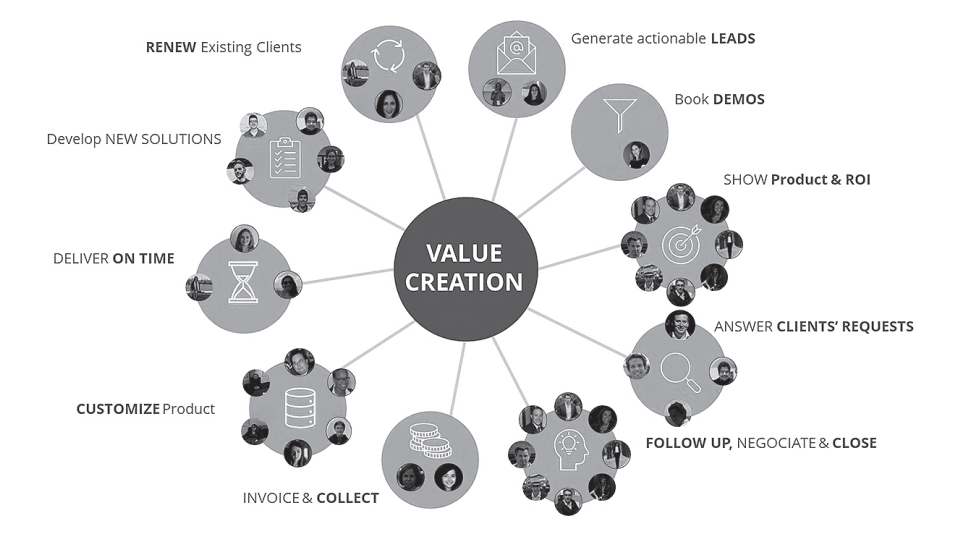Optimizing Your Organizational Machine: A Guide to Streamlined Business Success
Optimizing Your Organizational Machine: A Guide to Streamlined Business Success
In today’s fast-paced business environment, inefficiencies in your organizational structure can lead to wasted time, frustrated employees, and stagnating growth. Are you caught up in micromanagement or struggling with bottlenecks in your value creation process? If so, it’s time to optimize your organizational machine for efficiency, clarity, and scalability.
Signs Your Organizational Machine Needs a Tune-Up
Do any of these sound familiar?
- Spending evenings finalizing client quotes because you feel compelled to approve every decision.
- Projects slowing down when you copy multiple team members on emails.
- Hours spent on repetitive tasks like customer deliveries, sales proposals, or contract renewals.
- Employees “passing the buck” rather than taking ownership of their tasks.
- Constant delays due to a single time-consuming step in your delivery process.
These issues signal that your current processes may be holding your business back.
The Key to an Efficient Organization: The Value Creation Cycle
An optimized organizational machine revolves around a value creation cycle—a set of repeatable, well-defined processes that maximize productivity while minimizing waste. Here’s how to get started:
- Visualize Critical Activities: Identify the key tasks essential to driving value for your business.
- Assign Ownership: Clearly designate responsibilities for each task to avoid duplication and confusion.
- Track Metrics: Measure progress with specific, actionable metrics to ensure accountability and continuous improvement.
Building an Effective Value Creation Cycle
Every efficient organizational machine adheres to three principles:
- Clarity: Processes are streamlined and easy to follow.
- Focus: Team members dedicate themselves to their specific responsibilities.
- Efficiency: Employees are equipped with the tools they need to succeed.
Here’s a step-by-step breakdown of the value creation cycle to help you refine your own processes:

1. Customer Retention
Customer retention forms the foundation of your business. The account manager should focus on onboarding new customers, managing requests from existing ones, and ensuring seamless contract renewals. Regular check-ins are vital for maintaining client satisfaction and uncovering upsell opportunities.
2. Generating Awareness
Marketing efforts fuel your sales machine. In the digital age, producing compelling, targeted content is the most effective way to attract prospects and build your brand.
3. Converting Leads to Prospects
Leads only matter if they convert into genuine prospects. Ensure your marketing campaigns are designed to transition interested parties into potential customers who are eager to learn more about your products or services.
4. Demonstrating Value
Sales teams must focus on understanding customer pain points and articulating the measurable benefits of your solutions. Emotional intelligence and creativity are key to moving deals forward.
5. Closing the Sale
From crafting persuasive proposals to addressing technical questions and finalizing negotiations, this step is where preparation and professionalism shine.
6. Streamlined Invoicing
Leverage tools like electronic signatures, standardized terms, and templates to make billing seamless and efficient. This allows your finance team to focus on the most critical task: payment collection.
7. On-Time Delivery
Your production team must deliver products or services that meet customer expectations. Use standardized forms and internal checklists to ensure quality and clarity.
8. Onboarding Customers
Effective onboarding helps customers fully utilize your products or services, ensuring long-term satisfaction and retention. Tailor your approach based on the complexity of your offering, from simple brochures to comprehensive training sessions.
Eliminating Micromanagement: A Common Pitfall
Micromanagement often stems from a desire to maintain quality, but it can become a bottleneck. Instead of controlling every detail, focus on creating:
- Templates: Standardize processes to maintain consistency across teams.
- Checklists: Use quality control tools to ensure essential steps are completed without your intervention.
- Guidelines: Share best practices with employees to empower them to make informed decisions.
The Sprint Method: Your Productivity Booster
Adopt the Sprint Method—a problem-solving framework that quickly identifies and resolves inefficiencies in your value creation cycle.
- Map out your process to visualize inefficiencies.
- Collaborate with stakeholders to identify solutions.
- Implement standardized formats to streamline future tasks.
- Monitor progress and refine as needed.
For example, by applying the Sprint Method, one company eliminated 40 hours of wasted time per project, saving 3,000 hours over the course of a year.
Maintaining Long-Term Efficiency
Sustaining a high-performing organizational machine requires constant vigilance. Whether you take charge yourself or appoint a “scale manager,” focus on these three principles:
- Identify and eliminate non-essential activities.
- Clearly segment responsibilities to prevent overlap.
- Regularly evaluate and improve processes through quarterly Sprints.
Key Takeaways
To unlock your organization’s full potential:
- Align your team with a clear, efficient value creation cycle.
- Delegate responsibilities using tools like templates and checklists.
- Regularly optimize processes with the Sprint Method to ensure continuous improvement.
By embracing these strategies, you’ll build an organizational machine that not only scales seamlessly but also fosters a productive and satisfied workforce.
— Lionel Benizri —





